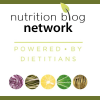The Indian diet has earned the reputation of being high in fat and carbohydrates due to the greasy naan breads and the butter chicken people usually go for at restaurants. This paints the picture that an Indian diet is not for the health conscious person. This however is not true. Although the Indian dietary pattern can include calorie dense foods, there is a plethora of healthy Indian meals one can include in their diet. There are options for both vegetarians and non-vegetarians.
Note: The words in italics are explained in the section below
Tips to enjoy healthy Indian dishes in the restaurant
- Opting for baked papad. Avoid fried versions
- Share appetizers
- Opting for a soup which is lentil based rather than a coconut milk based one as it has a higher saturated fat content.
- Opting for a plain chappati or a naan rather than a one with which is swimming in ghee or oil. Avoid puris and parathas as they are laden with fat.
- Opt for chicken Tandoori dishes over chicken tikka masala . Chicken Tandoori Masala is cooked in loads of cream. Chicken tandoori on the other hand is grilled or baked in a hotoven.
- Chicken, shrimp and vegetable biryani is healthier than lamb and beef as it is lower than fat. Meat kebabs and vegetables is also a good option.
- Portion control of rice. If you find the dish is primarily rice based, ordering a simple salad onthe side is a good option.
- Share the desserts as they too are high in fat and sugar.
Cooking Indian dishes at home
- Replace cream with evaporated skim milk.
- Avoid excessively cooking dishes which use coconut milk as it is high in saturated fat andcalories.
- Use alternative options for rice such as barley, oats and cracked wheat.
- When cooking a dish which has potato or other starchy vegetables, cut down on the rice.
- Opt for the non-starchy vegetables such as tomato, onion and mushroom instead of alwaysthe starchy vegetables such as potato.
- Choose roti over paratha or naan as to cut down on calories and saturated fat.
- Reduce the use of ghee, butter, oil as well as salt and add alternatives such as vegetable broth, vegetables fruit juice, herbs, spices, skim milk or skim milk powder.
- Legume dishes such as dal and channa masala can provide loads of protein and fibre and are a suitable alternative to meat dishes.
Indian meal names and their meaning
Roti
Unleavened flatbread made from wheat flour. It can be wrapped around pieces of food, used to scoop up sauces and curries.
Naan:
Leavened bread made from maida, an Indian white flour that is very delicate and powdery, similar to pastry flour.
Paratha
It is made of wheat flour with oil and the base is thick, usually mixed with vegetables.
Tandoori
Clay oven
Channa masala
Indian dish made up of chickpeas
Dal
Cooked dried, split pulses
Biryani
An Indian dish made with highly seasoned rice and meat, fish or vegetables.
Puris
A small, round piece of bread made of unleavened wheat flour, deep fried and served with meat or vegetables.
Papad
Thin, crisp cracker made with lentil or rice flower.
Benefits of an Indian Diet
The Indian diet, especially the Indian vegetarian diet, can provide a number of health benefits if followed the right way. The reason is that the Indian vegetarian diet is primarily plant based which is associated with a lower risk of chronic disease such as heart disease and diabetes. In fact, legumes which are a big part of the Indian diet are now being consumed by Australians in curries, added to salads or included in sandwiches and wraps. In addition, Indian spices such as turmeric have gained popularity all over the world due to their antibacterial and anti-inflammatory properties.
Contact us for results focused on nutritional advice
This article was written by our dietitian and nutritionist Juhi Bhambhaney. If you have any questions regarding health and nutrition, make an appointment with one of our dietitians. We‘ll provide you with a simple and effective routine targeted to your concerns. Contact us today.
The post Healthy alternatives with a Indian diet appeared first on ENT Wellbeing Sydney.










